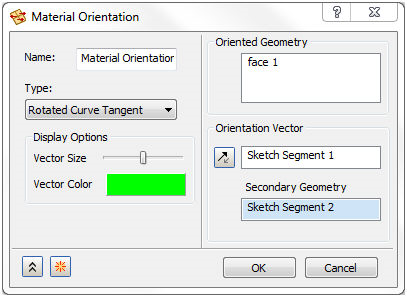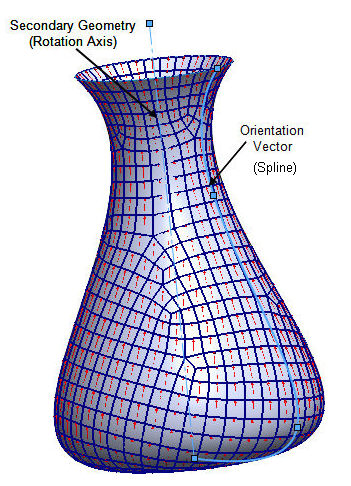In this method, the curve is rotated about the axis so that it is in front of the element origin. The tangent to a point closest to the element origin is projected on the element x-y plane to compute the material orientation.

The orientation vector on a face can be rotated about a center axis.
This method can be useful for helical strands of fibers on cylindrical parts.
The following example demonstrates the functionality.

As shown in the figure above, the model’s outer surface has strands that follow the orientation vector, a 3D spline curve.
Since this orientation is going around the entire outer surface, the center axis defines the rotation of this type of strand orientation.
When the rotating spline curve passes through the centroid of each element, the orientation tangent to the spline curve at that point would be assigned to the element.